Abstract
A screening examination including an electrocardiogram (limb leads only) coded by the Minnesota Code, using rigorous quality control was done on 18 403 male civil servants aged 40 to 64. The association of the findings with coronary heart disease has been tested in relation to age trends, symptomatic history, and coronary heart disease mortality rates in the ensuing five years. The results were positive for Q waves, left axis deviation, ST depression, and T wave changes (including minor T wave items as an isolated finding), ventricular conduction defects, and atrial fibrillation; but they were generally unimpressive for increased R amplitude and for lengthening or shortening of the PR interval, QT interval duration, premature beats, and extremes of heart rate. The prognosis of specific electrocardiographic findings discovered at screening is quite different from when they arise in clinical practice. Among the 6 per cent of men in this study with patterns suggesting ischaemia, the subsequent coronary heart disease mortality was little more than 1 per cent per year; and among those who were symptom free it was even less.
Full text
PDF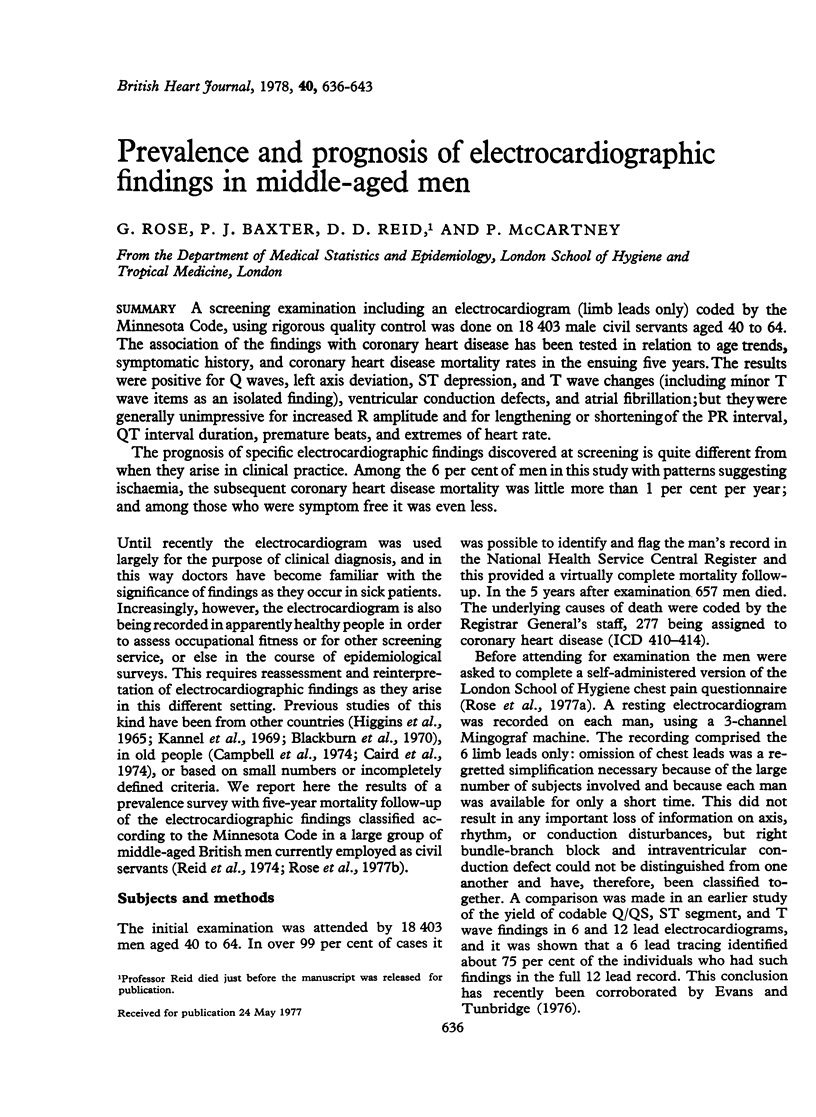
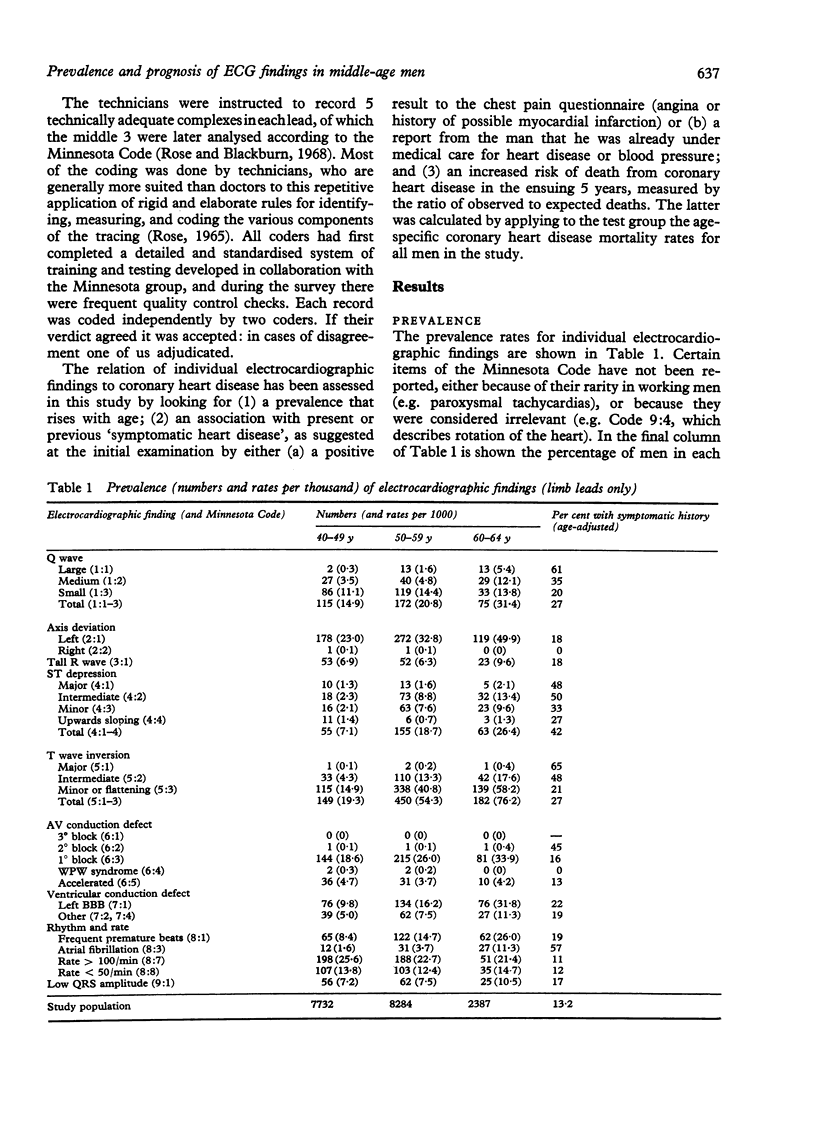
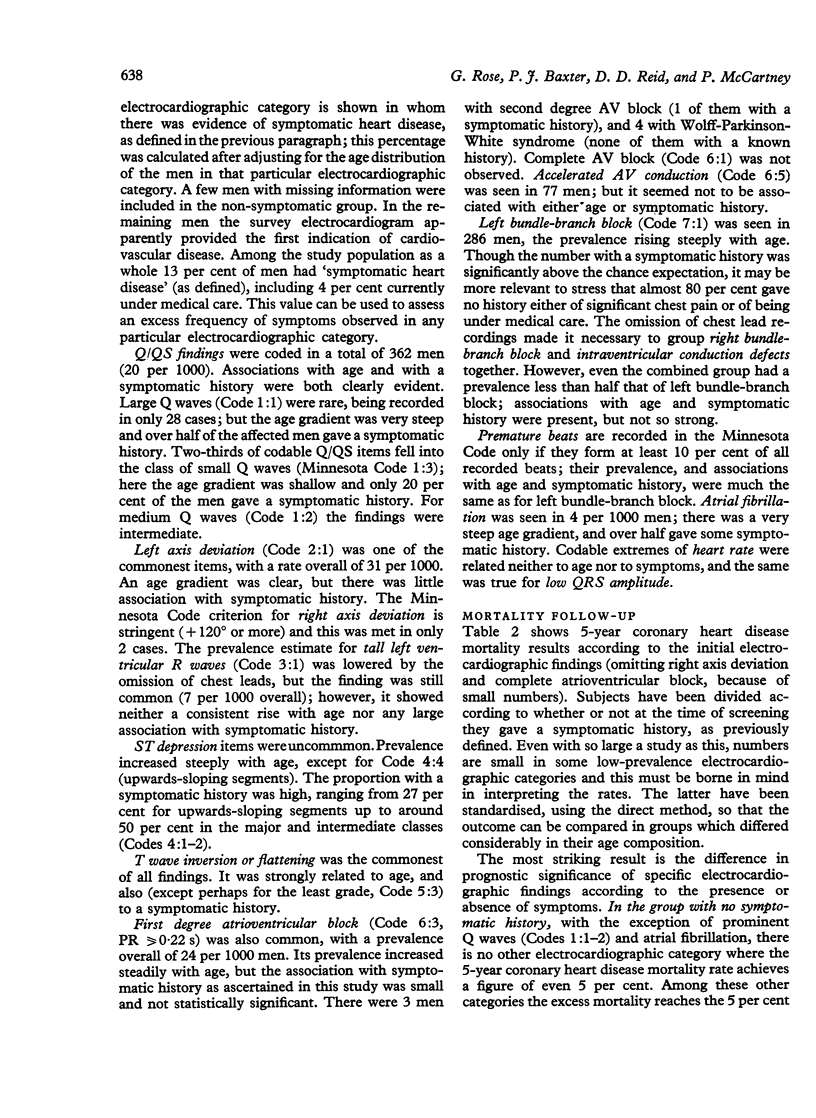
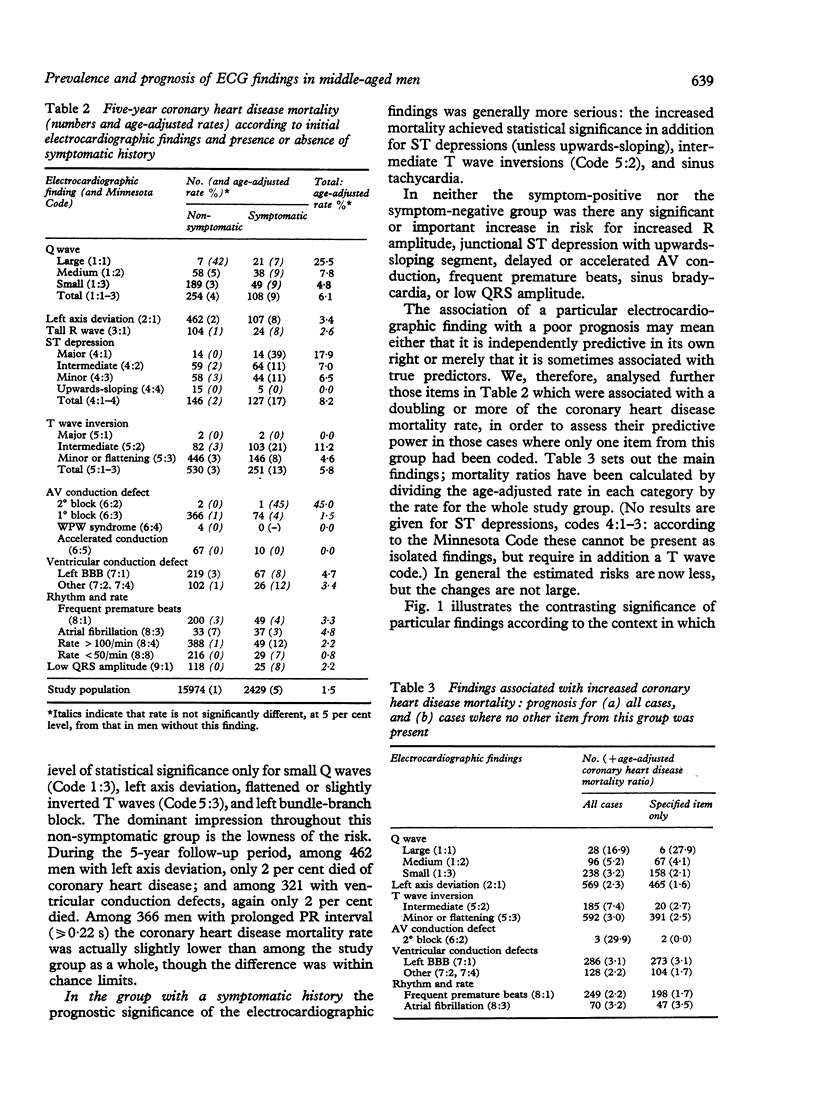
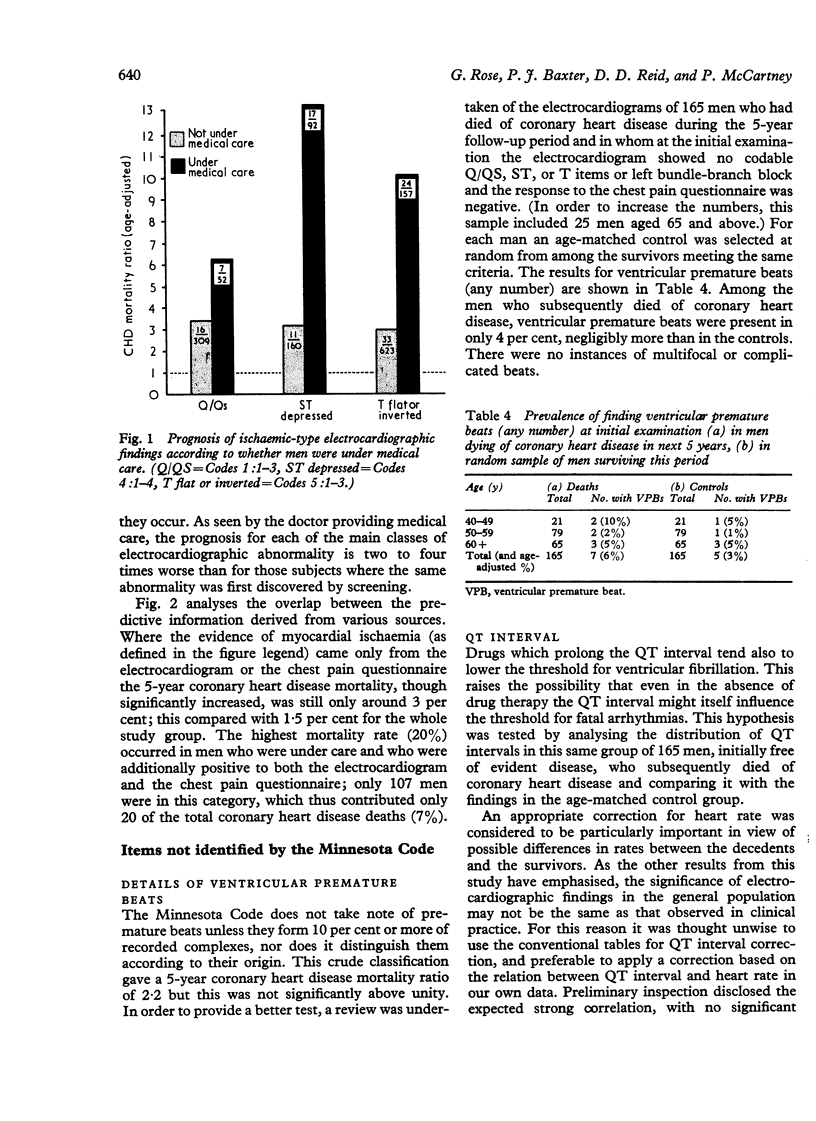
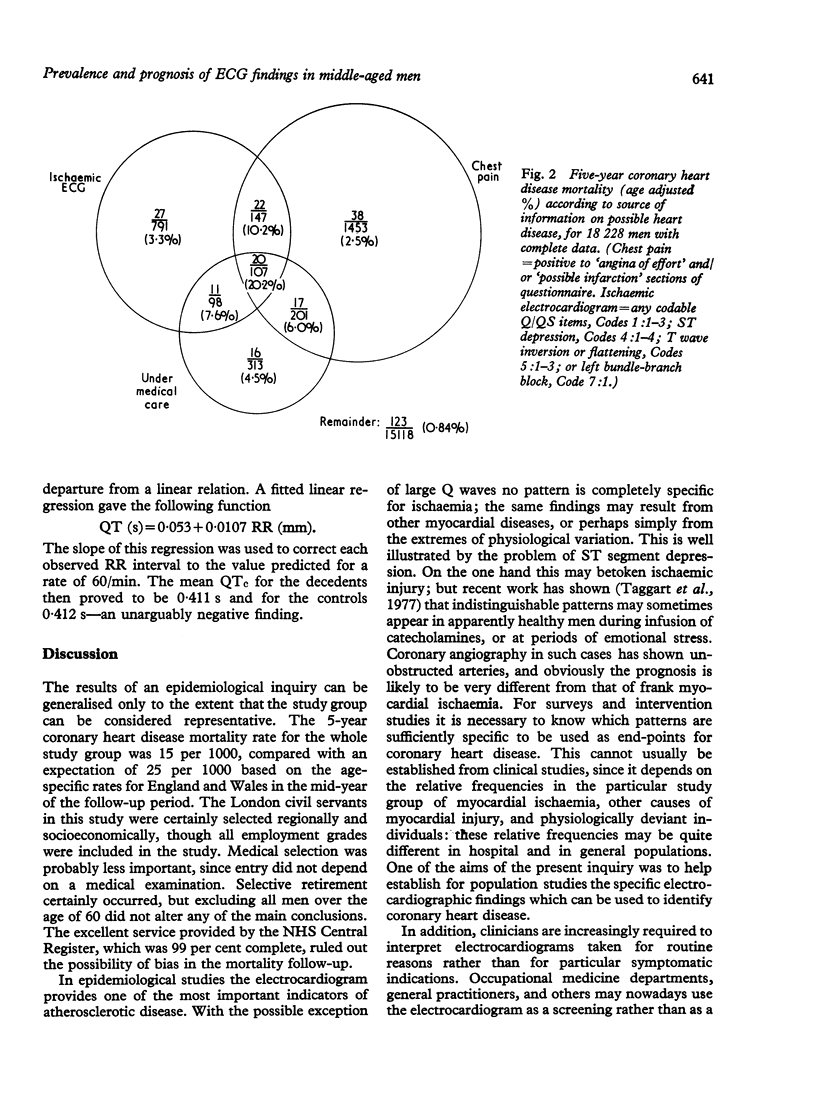
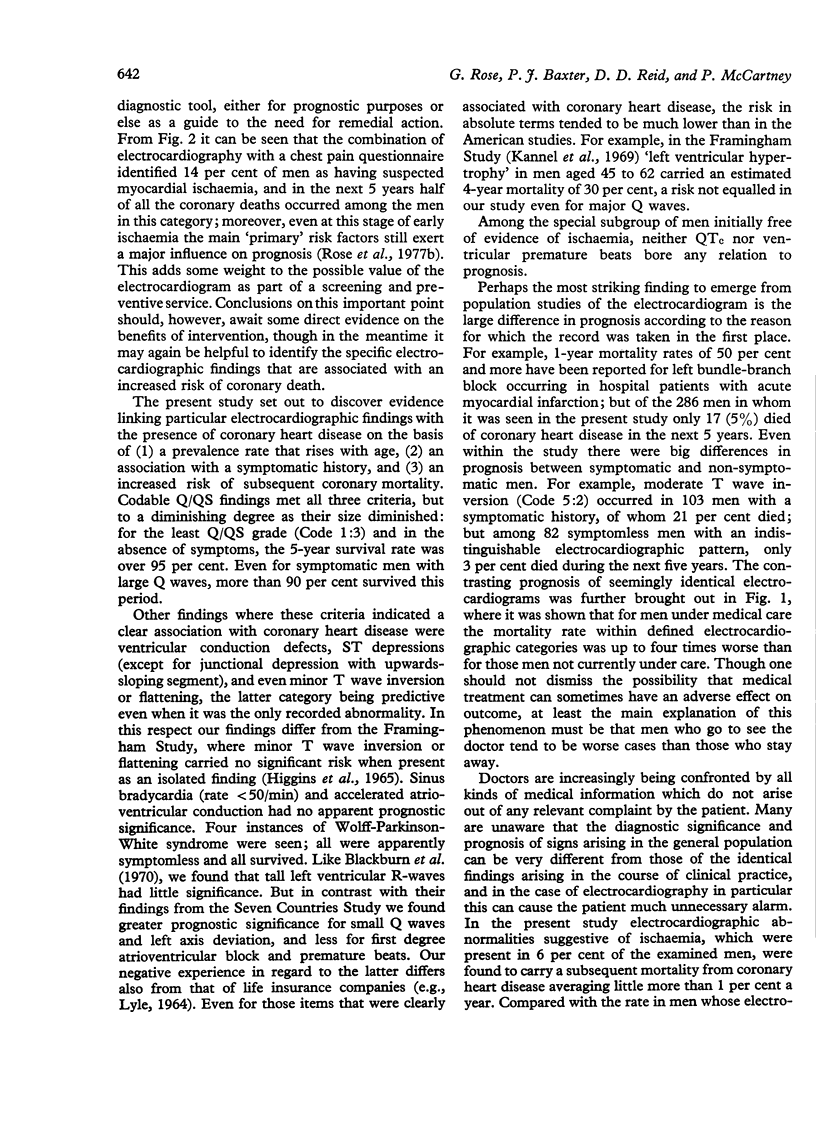
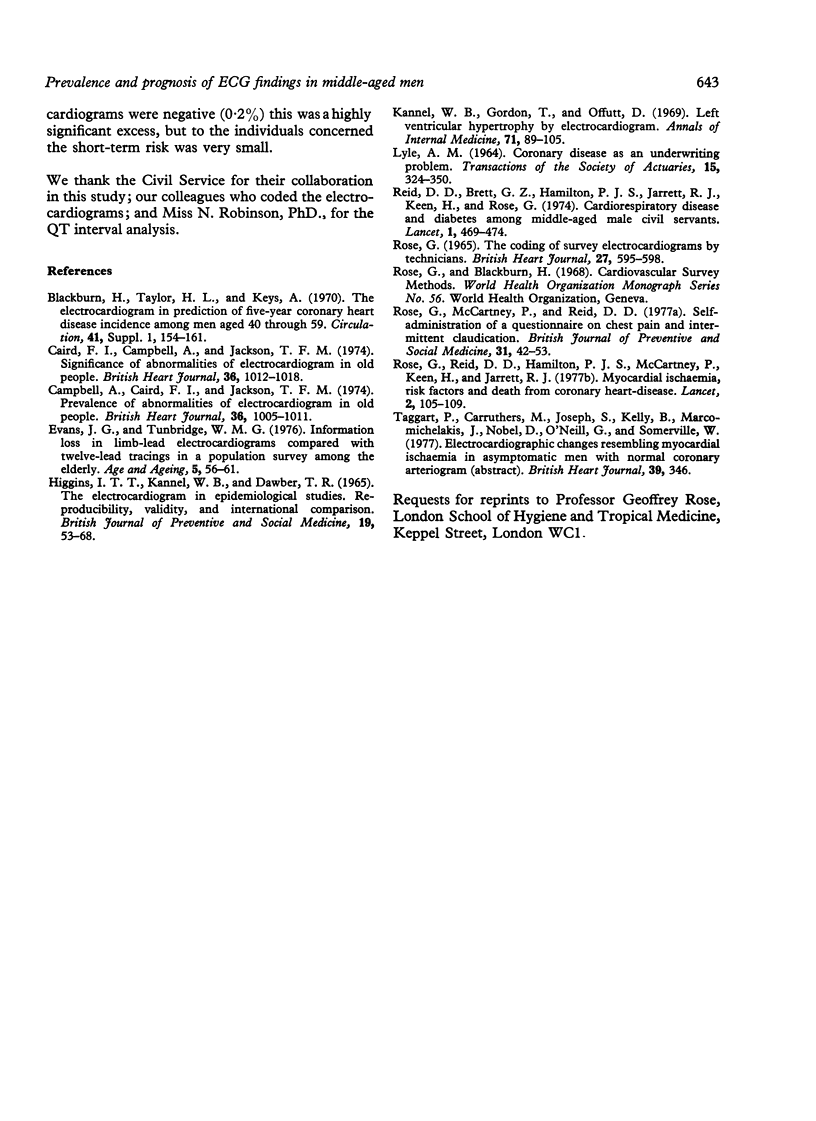
Selected References
These references are in PubMed. This may not be the complete list of references from this article.
- Campbell A., Caird F. I., Jackson T. F. Prevalence of abnormalities of electrocardiogram in old people. Br Heart J. 1974 Oct;36(10):1005–1011. doi: 10.1136/hrt.36.10.1005. [DOI] [PMC free article] [PubMed] [Google Scholar]
- Evans J. G., Tunbridge W. M. Information loss in limb-lead electrocardiograms compared with twelve-lead tracings in a population survey among the elderly. Age Ageing. 1976 Feb;5(1):56–61. doi: 10.1093/ageing/5.1.56. [DOI] [PubMed] [Google Scholar]
- HIGGINS I. T., KANNEL W. B., DAWBER T. R. THE ELECTROCARDIOGRAM IN EPIDEMIOLOGICAL STUDIES: REPRODUCIBILITY, VALIDITY, AND INTERNATIONAL COMPARISON. Br J Prev Soc Med. 1965 Apr;19:53–68. doi: 10.1136/jech.19.2.53. [DOI] [PMC free article] [PubMed] [Google Scholar]
- Kannel W. B., Gordon T., Offutt D. Left ventricular hypertrophy by electrocardiogram. Prevalence, incidence, and mortality in the Framingham study. Ann Intern Med. 1969 Jul;71(1):89–105. doi: 10.7326/0003-4819-71-1-89. [DOI] [PubMed] [Google Scholar]
- ROSE G. THE CODING OF SURVEY ELECTROCARDIOGRAMS BY TECHNICIANS. Br Heart J. 1965 Jul;27:595–598. doi: 10.1136/hrt.27.4.595. [DOI] [PMC free article] [PubMed] [Google Scholar]
- Reid D. D., Brett G. Z., Hamilton P. J., Jarrett R. J., Keen H., Rose G. Cardiorespiratory disease and diabetes among middle-aged male Civil Servants. A study of screening and intervention. Lancet. 1974 Mar 23;1(7856):469–473. doi: 10.1016/s0140-6736(74)92783-4. [DOI] [PubMed] [Google Scholar]


